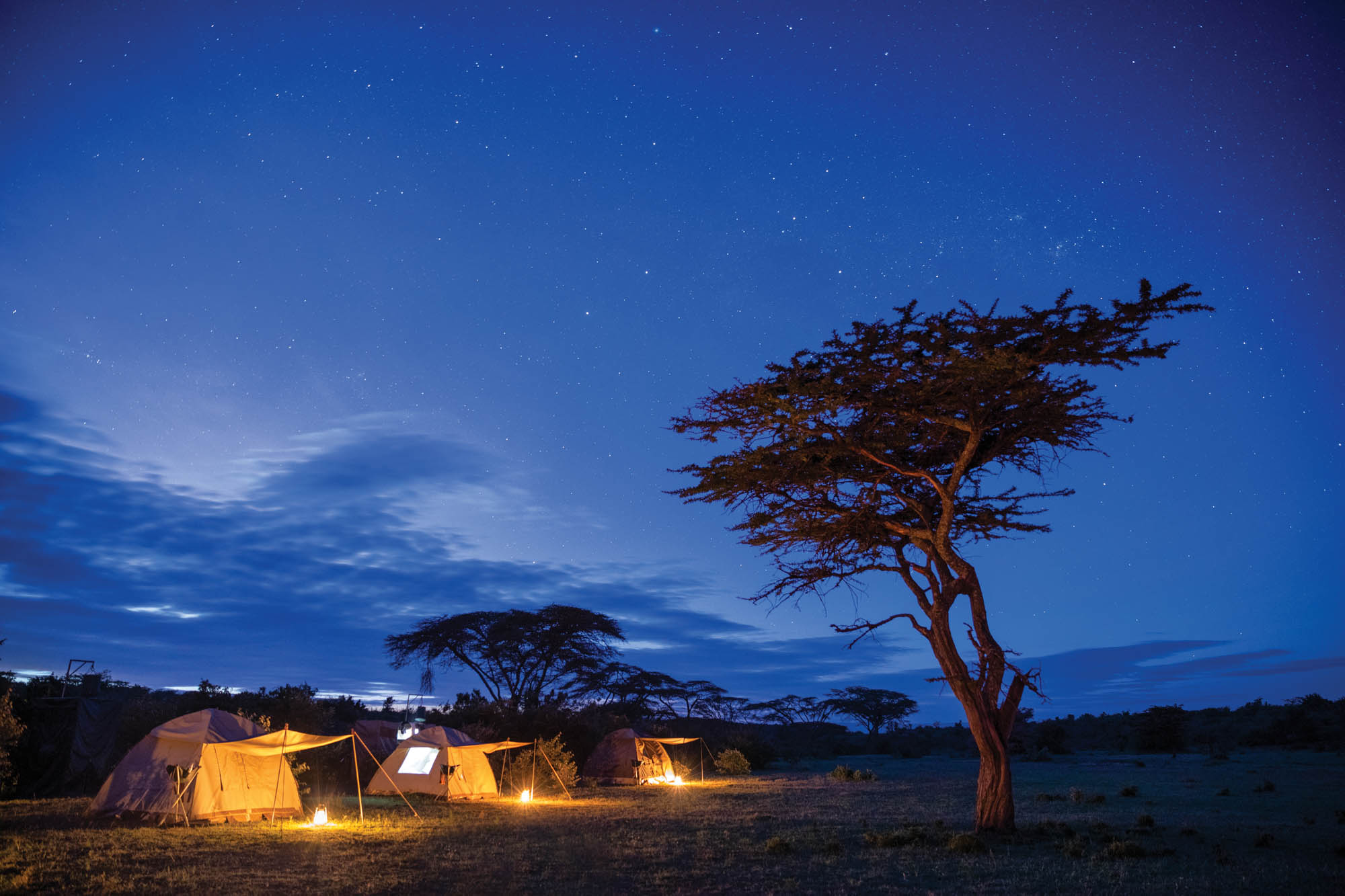
Photography by KEN GEIGER, BASECAMP EXPLORER
I had just checked my watch and turned to look out my window when a brilliant ball of color caught my attention. We had been flying for 13 of the scheduled 14 ½ hours to Nairobi on the only direct flight from New York to Kenya, a groundbreaking new route launched by Kenya Airways not four months earlier. Eight hours ahead of the United States, dawn was breaking over Africa. The sun was big, blood red and owned the sky. It was close, surreally so. I had never seen the sun like this before, intruding on its place in space, and likely might not see it this way again. In a blink of an eye, it was gone.
It was one of those unscripted moments of travel that humble with life altering timing and perspective, merging the unexpected with the extraordinary to change everything you thought you knew before. The Maasai have a word for experiences like this. It’s Enjoolata and it refers to the joyful feeling you’ll have when you come upon a hidden wonder or unforgettable encounter, when that which was concealed is revealed. My moment with the blood red sun was the first of many Enjoolata moments I would have on this safari, the others made more poignant by the wildlife and the Maasai people of the Mara, coming together in one amazing community in the place where life literally began.
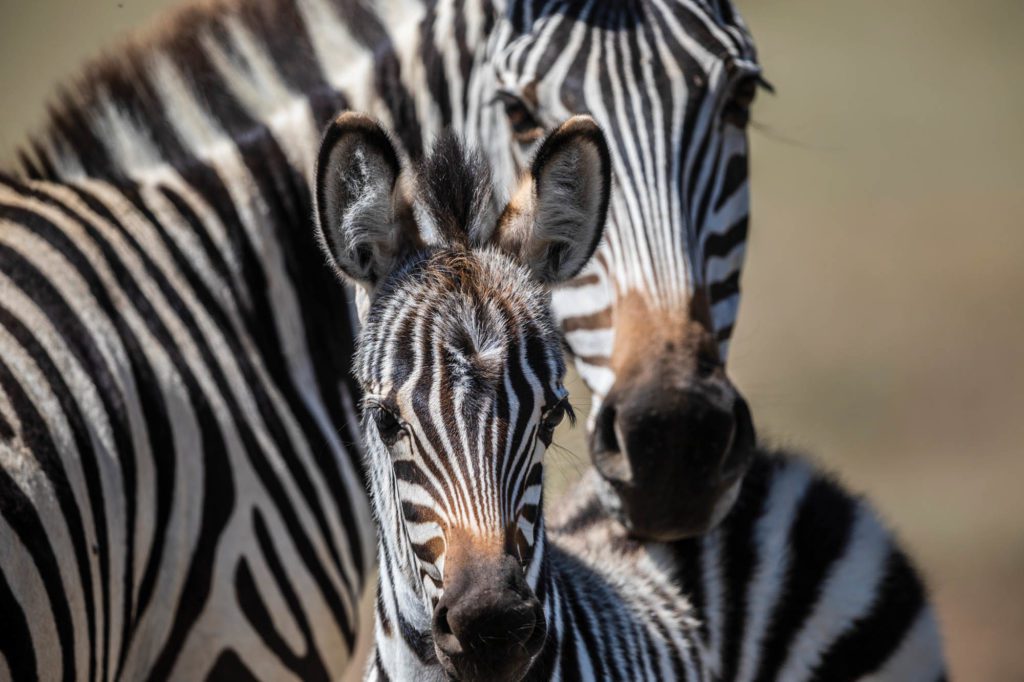
Zebras in the Nabiosho Conservancy
We touched down for a one-night stay at the 5-star Villa Rosa Kempinski, an oasis of Pan-African and European luxury ten minutes from the airport in Nairobi. Celebrities, presidents and heads of state call the Villa Rosa home when they’re in town, indulging, as we did, in the impeccable service, hospitality and dining delights the Kempinski brand is renowned for. We fell into a cloud of comfort in our room, windows open to witness Kenya’s capital city wake up to a new day before boarding a 13-passenger Safarilink plane for our one-hour flight to the Mara.
We were headed to Basecamp Explorer, a sustainable tourism company that operates five safari camps in the private Mara Naboisho Conservancy, a 50,000-acre wildlife reserve that shares a fenceless border with the legendary Maasai Mara National Reserve and is made up of land contributions from some 500+ Maasai families. The brainchild of Norwegian financier and founder Svein Wilhelmsen and the late Maasai chief Ole Taek, Basecamp Explorer is doing what the world should – promoting conservation and community commitment through a mutually beneficial, future focused business model that’s a win-win on every level – and then some.
As Svein would explain “the Basecamp model represents a bottom-up approach to the business of safari travel and attempts to be as financially self-sustainable as possible. Thus, safari tourism fulfills a greater mission than simply producing profit – it generates the cash needed to preserve unique wildlife species by paying long-term leases for the necessary land to the local community. In this model, safari tourism lifts a large number of people out of poverty through improving living conditions for people and livestock, while at the same time protecting endangered wildlife.”
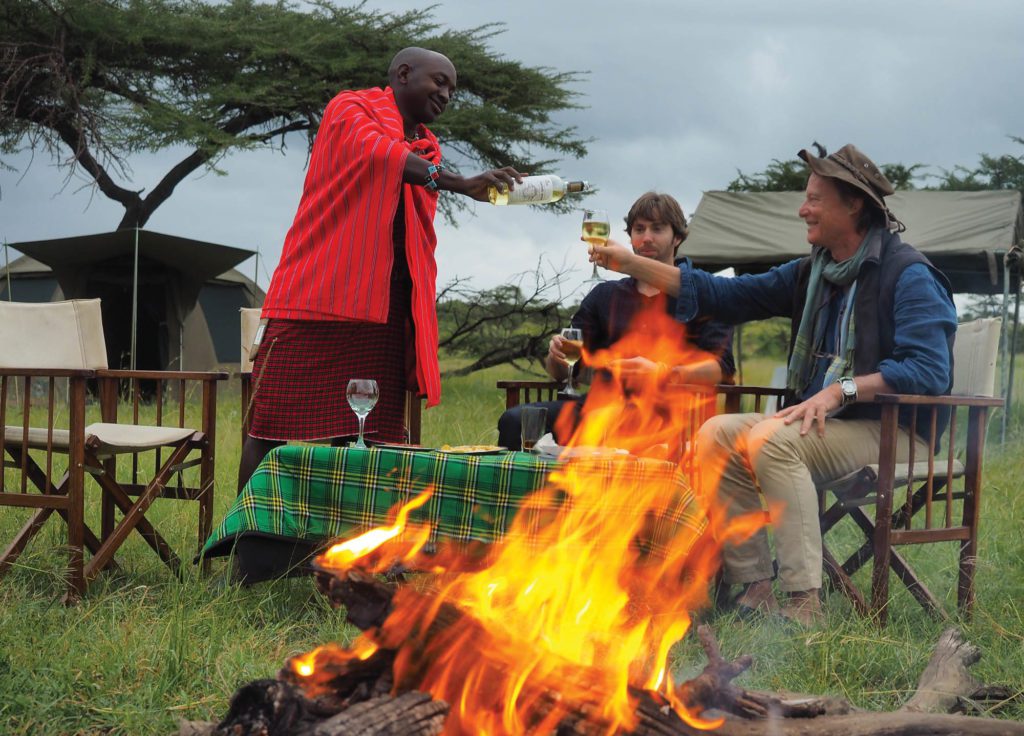
A coming together toast with Silver Certified Safari Guide Derrick Nbaala of the Maasai and Basecamp Explorer founder Svein Wilhelmsen
The ground rules of this cooperative venture are based on the respectful collaboration of nature and nurture on land leased by Basecamp from the Maasai, with an eye toward safeguarding a way of life dating back centuries. Benefiting all parties, the game plan in play here is reflected in the shared pride, smiles and personalized services of Basecamp’s uniquely empowered Maasai staff, 95% of whom are local villagers. It is evident in the environmentally sensitive, elegantly inspired guest accommodations that were masterfully designed and sited to blend in seamlessly with the wilderness. And it is confirmed in the thriving population of prey and predators, impressive numbers of big cats, elephants, giraffes and wildebeest among them, that make the safari adventures on offer – and the rewards – a reality for the privileged few lucky enough to make their way here.
Tourism and land conservation are strictly controlled in Naboisho, an area vital for the survival of the entire Serengeti-Mara ecosystem. Unlike the Maasai Mara National Reserve and other national parks in Africa, the conservancy limits the number of safari vehicles permitted at a sighting to four at a time, 45-minute stays, and allows guests to participate in activities not permitted elsewhere, including walking safaris, night game drives and bush dinners. This exclusivity has had a positive impact on all living things in Naboisho, from the vulnerable wildlife it protects and the people it lifts up to the trees that have been planted to reforest and revitalize the region.
By conservancy rules, only a limited number of beds are allowed in Naboisho – Basecamp has 52 of them dispersed among its 5 solar-powered camps – reducing the footprint of tourists eager to experience this safari paradise. We spent our first night listening to barking zebras and grunting lions at a hilltop eco-camp aptly named Eagle View for the endless panoramic vistas we enjoyed of a nearby watering hole and the plains behind stretching as far as an eagle can see. Our screened-in tented room was one of nine elevated sanctuaries, secluded and spread out in the wild, animals literally at our doorstep. Seven of us camped out in the savannah in four mattress-plumped pup tents, bonfire lit to keep predators away, during a memorable Maasai-guarded overnight at Dorobo Mobile Camp. We slept under an impossibly starry sky at Leopard Hill for two nights, where our luxurious tented accommodations boasted a motorized roof that opened to the heavens for the ultimate in-room indulgence, along with two decks, showers inside and out, and a private fire pit for romantic al fresco dinners. Visits to the other two camps, rustic and remote Wilderness Camp, nostalgically evoking safaris of yesteryear, and Basecamp Masai Mara, bordering the National Reserve along the wildlife-rich Talek River – and onetime vacation choice for Barack Obama and his family – were equally inspiring. Think movie-set scenes from the film, Out of Africa, and you’ll have a glimpse of what we savored at each of the camps, where meals, in the dining lounge or out in the bush, were served Maasai style, locally sourced, garden fresh and topped with joyful celebrations of song and dance that are so much a part of the culture here.
The Maasai are traditionalists, preferring to live like their forefathers did in balanced harmony with the wildlife that share their homeland. They have an aversion to eating birds and game, preferring instead to dine on milk and blood from their cattle. Red is their favored color and when you spot their blanketed figures, aristocratic and crimson royal against a backdrop of green fields and acacia trees, spears in hand, the image will stay with you forever.
That’s how we first saw Big Moses when we landed on a dirt runway in the Mara, a Maasai elder who became larger than life the closer we got to him. A wildlife whisperer born of the bush, Moses is one of the founding members of the conservancy and one of its biggest landowners and is inextricably linked to all Basecamp initiatives. His love for his land and the life it supports is measured in expertly led game drives and walking safaris, sundowner soirees and warm campfire conversations wise and wonder-full, where he teaches and listens and learns and laughs, heart open, smile wide, eyes seeing the good everywhere he looks.
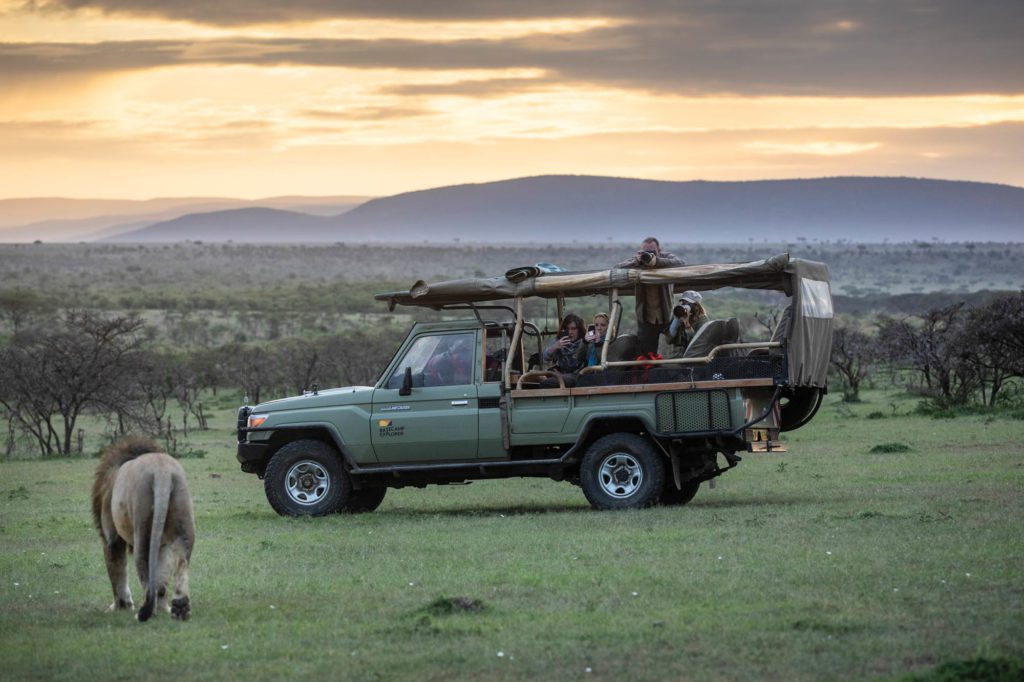
Daily game drives in the Naboisho Conservancy promise up-close wildlife sightings
Rising before dawn for early morning game drives and joining him again at dusk, Big Moses guided us through the plains and bush sharing stories and insights cultivated from generations of firsthand experience. By instinct he knew where the lions slept, the leopards treed, the cheetahs hunted, the giraffes grazed, the elephants foraged, the buffalo rested and the hippos pooled, even pointing out a rarely seen Caracal cat hiding in a thicket. He tracked signs and scat in the bush, stopping to pull a natural toothbrush off a tree and examine elephant dung for medicinal berries. He followed herd animals, big and little, zebra-striped, blue-jeaned, heart-faced, Thomson tiny, wildebeest strong and warthog tolerant, ever on high alert for predators lurking in the shadows or up in the trees. He led us to crocodile sightings, ostrich families and hyena dens hidden in the ground, spotting wildlife out of nowhere and everywhere. Through his eyes we saw life unfold in a moving pageantry of birth, death and survival, the color red making its mark with the inevitable bloody kill and feeding frenzy that followed.
This is not the Mara Moses grew up with, where rhinos and other now endangered animals were once plentiful, but it’s a start he told us, one that’s regaining a foothold thanks to Basecamp and the conservancy. Today the Naboisho is home base for more than 70 identified lions, one of the largest densities of lions in the world, and has become a protective haven for growing numbers of elephants seeking refuge from illegal poachers. Vanishing species are making a come back here too, with once common wild dog packs on the rise.
More investment is needed to expand the wildlife areas in this region, he told us, so that every living thing can roam freely, without fences, and continue to come together in the Mara as nature intended. That Svein Wilhelmsen was inspired to devote his time and resources to wildlife – and Maasai – preservation after many a safari and a chance fireside conversation with Chief Ole Taek some twenty years ago is understandable after experiencing a taste of the place and people he has come to love. It is true what they say, Africa has a way of taking hold, heart and soul, from the moment you arrive. And to see in person what Svein has accomplished here with Basecamp Explorer, the conservancy and the communities they serve is humbling and speaks volumes about the power of humanity.
More investment is needed to expand the wildlife areas in this region, he told us, so that every living thing can roam freely, without fences, and continue to come together in the Mara as nature intended. That Svein Wilhelmsen was inspired to devote his time and resources to wildlife – and Maasai – preservation after many a safari and a chance fireside conversation with Chief Ole Taek some twenty years ago is understandable after experiencing a taste of the place and people he has come to love. It is true what they say, Africa has a way of taking hold, heart and soul, from the moment you arrive. And to see in person what Svein has accomplished here with Basecamp Explorer, the conservancy and the communities they serve is humbling and speaks volumes about the power of humanity.
As we were leaving Basecamp after a week of so many “awesomes” and “wonderfuls” that we ultimately coined the perfect word “wondersome” in their stead, we enjoyed a final game drive that really brought home the impact Naboisho – meaning “coming together” in the Maasai’s Maa language – has had in the Mara.
The herd animals were gathered a hundred fold in an open plain along the elephant path we used as a road. The gazelles, the elands, the topis, the zebras, the hartebeest, the warthogs and the wildebeest stood as a united community, different species, one shared goal: survival. Our driver Nash, one of Kenya’s first female safari guides, explained that the animals band together like that for protection from the big cats and other predators. Some hear better, some see better, others detect scents better, each of them standing watch and ready to alert the herd when danger is near. We spied a few hopeful jackals darting here and there looking for easy baby-sized prey as ever-vigilant mothers kept their eyes on them, before regrettably driving on towards the landing strip.
Up ahead and off in the distance, specks of life, indiscernible to us, caught Nash’s trained eye. She veered off road so we could photograph a pair of majestic crowned cranes standing alone on the savannah. Some minutes later she stopped again and turned the jeep toward a dirt ravine, seemingly void of any living thing. Look, Nash whispered as she cut the engine, pointing to the barren ground. Enjoolata! There, lying right next to our vehicle, almost within touching distance, was a lone cheetah. The fastest mammals on Earth, cheetahs are skilled killers with excellent eyes, perfect for their daytime hunts, and can speed off in an instant when they spot prospective prey. This spotted beauty looked up at us nonchalantly, closing her eyes to shut us out or sneak in a catnap, I wasn’t sure which. Nash said she looked hungry and I wondered, if only for a brief second, if she considered our presence as a potential meal or nothing more than a mere distraction.
In a blink of an eye, she was gone. A fitting analogy of what could happen to the wildlife of the Mara if we don’t come together now on its behalf.
About Basecamp Explorer: Basecamp Explorer Kenya manages unique safari accommodation camps in the Masai Mara and Mara Naboisho Wildlife Conservancy in Kenya. A global leader in sustainable tourism since its inception in 1998, Basecamp’s operations create community partnership development and long-term solutions for wildlife conservation while developing models for conserving nature and empowering the local community.
If you go:
Fly:
Kenya Airways to Nairobi, the only direct flight from New York to Kenya. Safarilink to the Mara, a 45-minute flight to the heart of the Mara
Stay:
In Nairobi: Villa Rosa Kempinski, Chiromo Road Nairobi KE, Kenya
Phone: +254 703 049000
In Naboisho: Basecamp Explorer
Basecamp Masai Mara, 17 tents next to the Maasai Mara
Eagle View, a 9-tent camp overlooking the river and the plains
Leopard Hill, 4 deluxe tents, 1 family tent, 1 honeymoon suite
Wilderness Camp, rustic and remote with 8 tents
Dorobo Mobile Camp, 4 tents, Maasai guides and endless memories
Safari prices and packages vary; visit basecampexplorer.com for details.

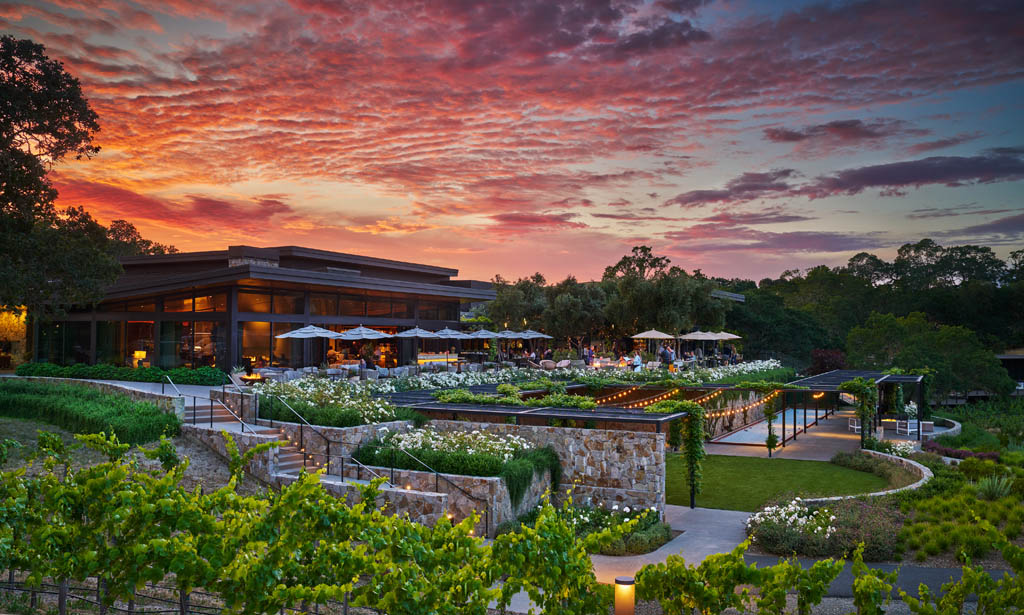
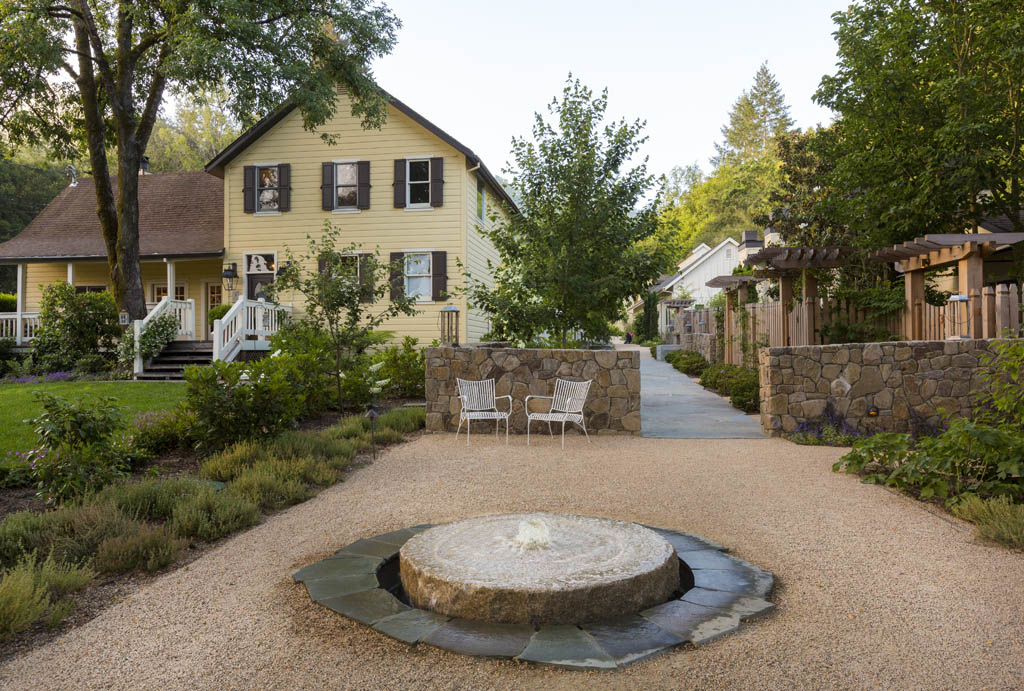
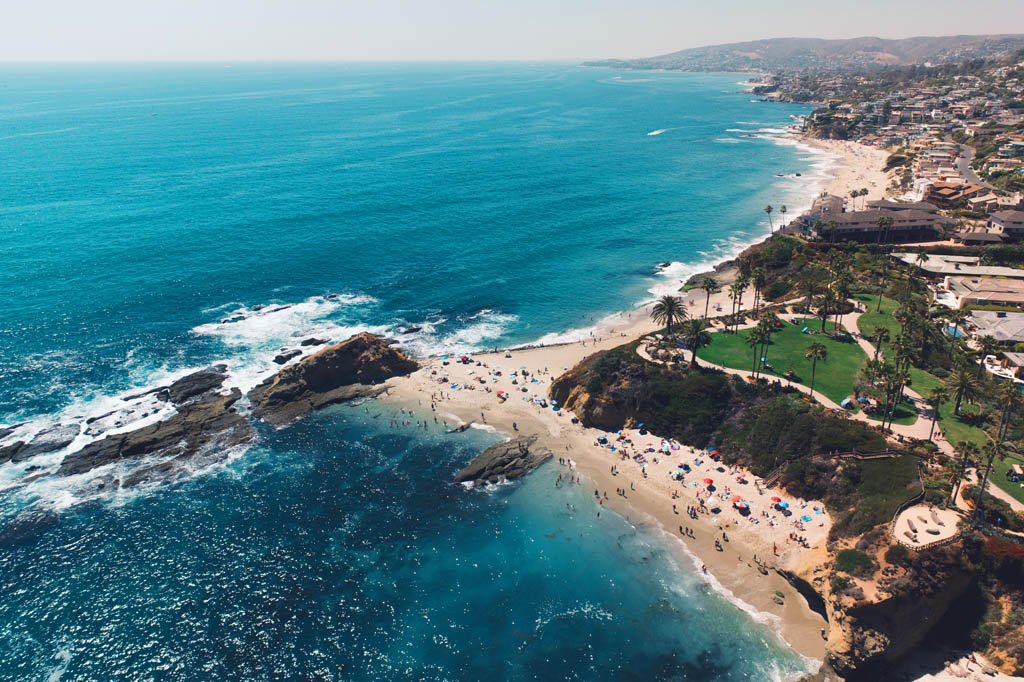
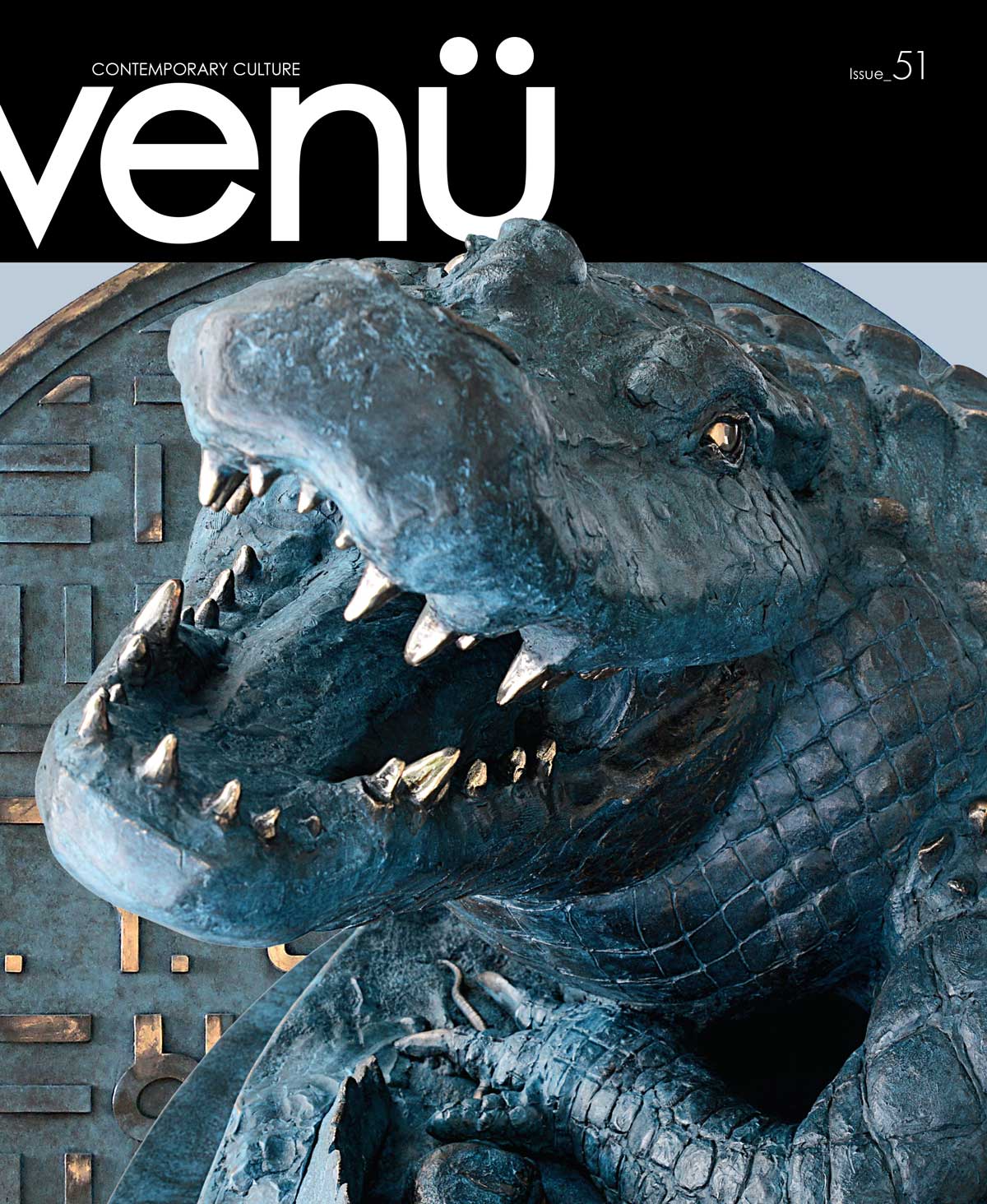
Leave a Reply